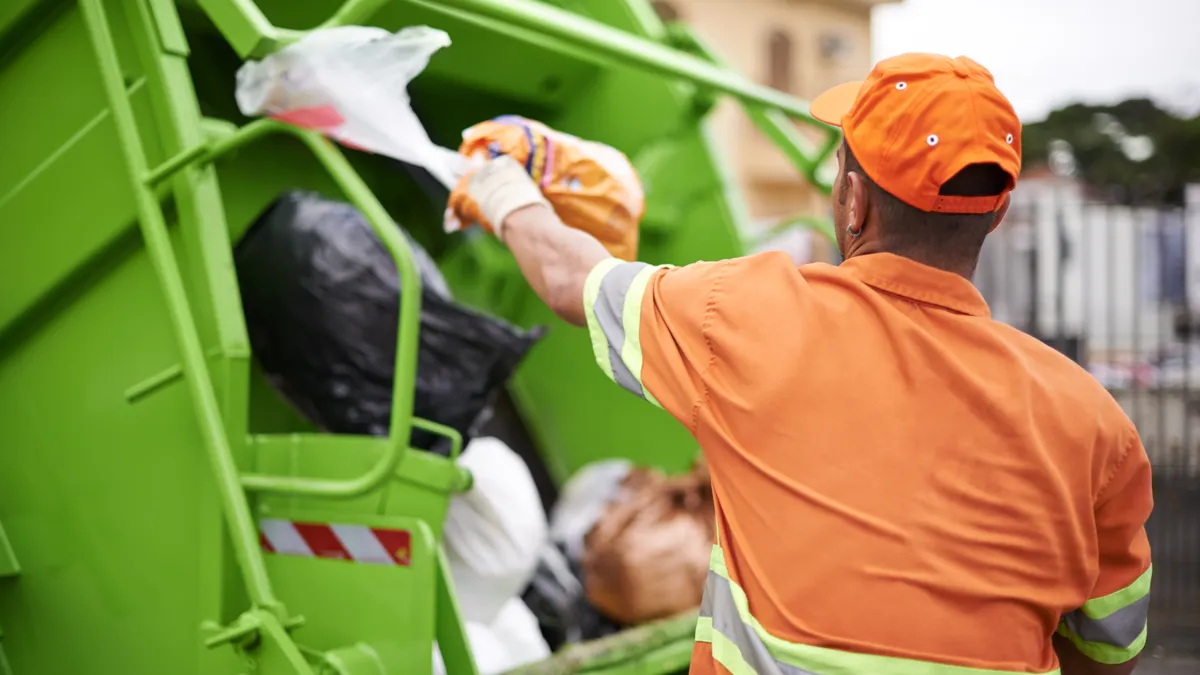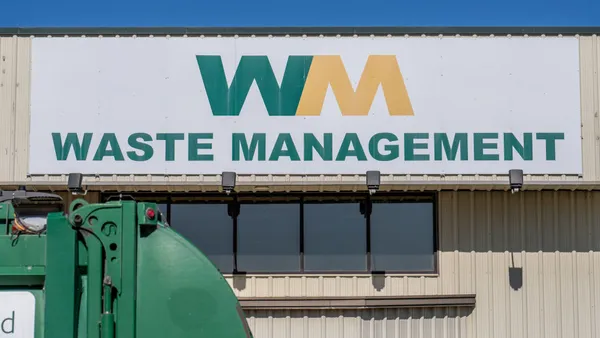Dive Brief:
- The rate of fatalities among “refuse and recyclable material collectors” decreased in 2022, according to newly released data from the U.S. Department of Labor’s Bureau of Labor Statistics. Waste collection was still the seventh deadliest job in the U.S. in 2022, the same as the previous year.
- For every 100,000 full-time collection workers in that sector, there were 22.6 fatal work injuries, compared with 27.9 in 2021. Overall, there were 31 fatal occupational injuries in 2022 in the related “solid waste collection” category, 19 of which were linked to transportation incidents. That’s down from 34 in 2021 and 38 in 2020.
- Deaths at MRFs increased in 2022. There were five fatalities at MRFs in 2022, with three of those fatalities considered transportation incidents. That’s up from four MRF fatalities in 2021 and four in 2020. BLS reported seven fatalities from the broad waste treatment and disposal category.
Dive Insight:
The latest fatality data shows another year of improvement for the waste sector, making this the third year in a row that fatality rates have decreased. However, the industry is still looking toward a broader goal of getting off the top 10 list of most dangerous jobs.
“While we are pleased with the declining rate of fatalities in our industry, one fatality is one too many,” said Jim Riley, interim president and CEO of the National Waste & Recycling Association, in a statement. “We commend our members for making safety a priority and look forward to continuing our efforts to bring every worker home safely at the end of every shift.”
Waste industry groups see a combination of safety programs, education and equipment and engineering updates as paths toward safer workplaces.
“We will work to continue the reduction in worker fatalities through continued industry engagement,” said Amy Lestition Burke, executive director and CEO of the Solid Waste Association of North America, in a statement. She added that the data “is a reminder that we need to make sure that safety is a core value and top priority across all lines of business.”
David Biderman, president of Biderman Consulting, said more could be done to prevent all types of fatalities, including those that occur at post-collection sites. “We need to continue to focus on basic safety, communication, and training and reminding workers about ANSI standards and other best practices,” as well as providing safer equipment, he said.
Biderman also pointed out that so far in 2023, there have been several fatalities at landfills that involved collection workers. “These incidents get counted as ‘collection’ but highlight the fact that landfills can be hazardous for both employees and customers,” he added in an email.
BLS did not provide specific fatality data for landfills in 2022 as it had in previous years. A representative from BLS said the Census of Fatal Occupational Injuries recently changed its data disclosure methodology, meaning there are sometimes fewer data points to report either because of confidential data considerations or because of a “true zero,” meaning there are no reported fatalities for a specific industry. It’s not clear which of these factors was the reason landfill fatality data was not included for 2022, the representative said.
It did offer data in the broader “waste treatment and disposal” category, which includes numbers from solid waste landfills, hazardous waste landfill, solid waste combustors and incinerators.
While the waste collection sector experienced fewer fatalities this year, BLS recorded an overall 5.7% increase in fatalities across all U.S. sectors in 2022. There were 5,486 fatal work injuries recorded in the United States in 2022, up from 5,190 in 2021. The fatality rate was 3.7 fatalities per 100,000 full-time employees, up from 3.6 in 2021.
The sector with the highest fatality rate in 2022 was logging, followed by roofers, and fishing and hunting workers.
Transportation-related fatalities were the most common type across all types of U.S. occupations and increased by 4.2% in 2022, BLS said. There were 2,066 fatal injuries from transportation incidents in 2022, up from 1,982 in 2021. The waste industry has been working to reduce truck and transportation-related injuries through a combination of automation and safety programs.
“Despite consecutive increases in 2021 and 2022, transportation incidents were still down 2.6 percent from pre-pandemic levels in 2019 when there were 2,122 fatalities,” BLS said in a news release.
Workplace fatalities also increased in 2022 for Black and Hispanic or Latino workers. Black workers faced a fatal injury rate of 4.2, up from 4.0 in 2021, while Hispanic or Latino workers experienced a fatality rate of 4.6, up from 4.5 in 2021.
“This year again, we see that Black and Brown workers are dying at a higher rate than other workers,” said Jessica Martinez, co-executive director of the National Council for Occupational Safety and Health, in a statement. “This disparity reflects both historical and current discrimination in our workplaces and cannot be tolerated. All workers have a right to get home safe and sound after a day at work.”
As the waste industry continues to work on lowering the overall fatality rate, it’s also working to lower its injury rate, which increased in 2022, according to separate data released in November.











